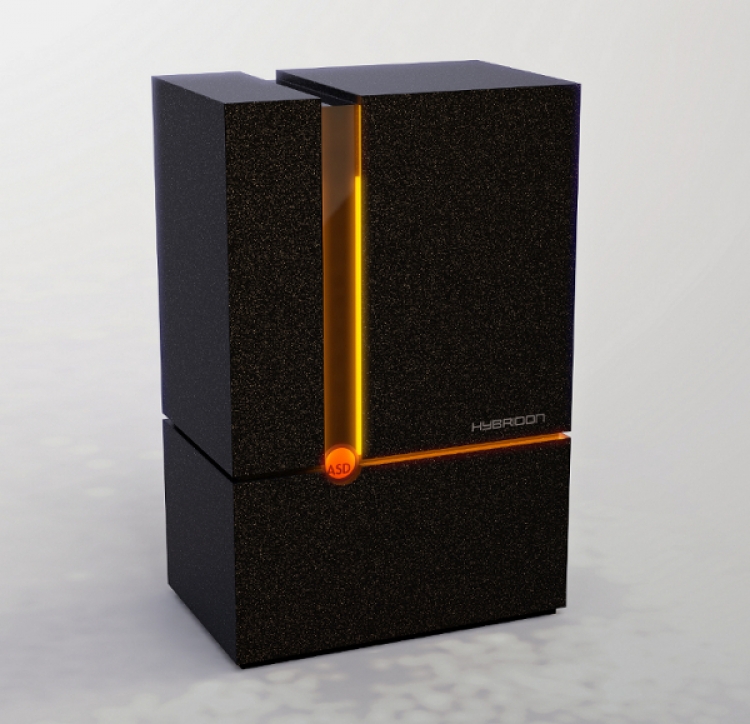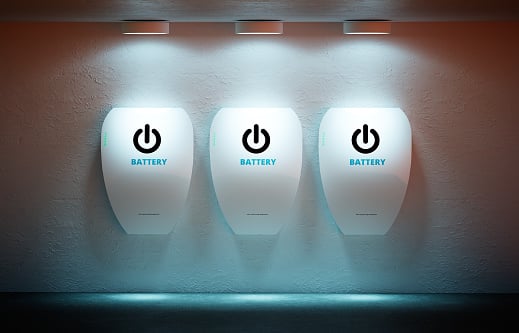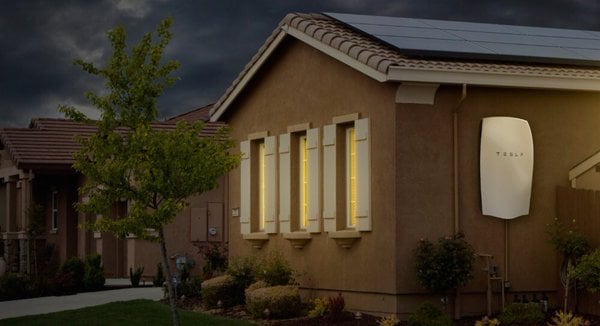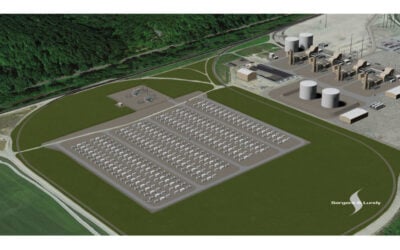
The global residential storage market has been picking up momentum recently, with installation growth rates soaring in many geographies such as Australia, the USA — and particularly Germany, which clearly leads the pack. Some 35,000 systems came online in 2017 alone and another 45,000 systems are expected in the course of 2018. In total, 90,000 residential storage systems have been installed to date, equaling around 500MWh, or two thirds of Germany’s total operational stationary energy storage capacity.
But what has driven this boom in Germany, the world’s leading market for residential storage? What value do customers expect when adding a storage system to their homes? And more importantly, what are energy storage providers doing to sustain and accelerate growth, which can eventually unlock a true mass market?
Enjoy 12 months of exclusive analysis
- Regular insight and analysis of the industry’s biggest developments
- In-depth interviews with the industry’s leading figures
- Annual digital subscription to the PV Tech Power journal
- Discounts on Solar Media’s portfolio of events, in-person and virtual
To answer these questions, this article investigates the three principal business models for residential storage that we at Apricum see in Germany today, namely:
-
“Cash for the box” – just selling the energy storage hardware
-
“Utility play” – in addition, selling the residual amount of electricity
-
“Aggregation & stacking” – aggregating individual storage units to exploit the full revenue potential
“Cash for the box”: early industry powered by dentists and retired engineers
Many of the residential storage system sales in Germany, so far, were based on the “cash for the box” business model. It addresses the German key use case for residential storage: increasing the self-consumption of self-generated PV-power. Indeed, falling Feed-in-Tariffs (FiT) and high electricity retail prices increasingly favor self-consumption over grid purchase, and pairing a PV system with residential storage can help expand the share of self-consumption at still lower average procurement costs than pure grid supply. But it is important to note that the PV system typically “subsidises” the storage unit. Hence, adding residential storage generates lower returns than a PV-only solution. The business case is improved — to a certain extent — through federal incentives for residential storage such as the “KfW 275” program, which offers low interest loans and a repayment bonus. However, due to feed-in restrictions, bureaucracy, budget limitations and other reasons, uptake of the program has been limited. Only about 20 % of new installations were supported in 2017. More importantly, the program will expire by the end of 2018, with no plans for an extension currently visible.
Consequently, the market, so far, was mainly driven by the —surprisingly large — early adopter segment. This segment is characterized by individuals who can afford to act not entirely in a return‑driven manner, but install residential storage mostly for non-monetary reasons such as the wish to increase independence from the utilities or to actively support Germany’s energy transition. Often, a certain technical curiosity and affinity as well as a fear of black outs play a role, too. Based on these characteristics, the early adopters for residential storage in Germany are often generalised as “dentists and retired engineers”.
But looking to the future, dentists and retired engineers alone cannot ensure continued market growth. In the future, it will be important to also attract more cost-sensitive customers beyond the early adopter segment. One strategy could be to stick to the “cash for the box” business model and to rely on further declines in energy storage costs, increasing electricity retail prices and home PV systems starting to exit the FiT from 2021 onwards, along with improving retail channels and relationships to installers. But some storage providers are choosing other business models to ensure growth.
“Utility play” – cloud solutions for increasing convenience
With the “utility play” business model, residential storage providers offer the following value proposition: Customers buy a residential storage system at a preferred price and pay a fixed flat rate per month, typically lower than the current electricity bill. In return, they get access to the provider’s “energy cloud”: The customer can “upload” any surplus self-generated PV power into the cloud and “download” it, e.g., at a later point in time when the sun does not shine, at a different location, (for example, to charge an electric car while on vacation in Italy) or by the customer’s friends and family on his behalf.
In reality, there is of course no electricity uploaded or downloaded. Instead of an “upload”, the customer feeds excess PV power into the grid as usual, but the storage provider obtains the FiT. When the customer wants to “download” electricity from the cloud, the storage provider buys and delivers “green electricity” (i.e., from renewable energy sources) to balance consumption at the customers’ home or at the charging station, i.e., supplies the required residual electricity. So essentially, the storage provider uses FiT revenues to offset part of the required green electricity purchases for cloud “downloads”.
The customer could, of course, feed-in the PV power himself, receive the FiT and cover residual electricity demand with a regular electricity supply contract, so the net savings for the home owner compared to the “cash for the box” business model are typically negligible. However, savings are not the primary concern of this business model. Instead, the key value proposition of “utility play” is increased convenience for the customer. Instead of dealing with separate parties for the residential storage unit and the residual electricity supply, everything is under one roof and at a fixed rate that protects against future retail electricity price hikes. For the storage provider, it is an attractive model as well: First of all, it creates a new revenue stream based on flat rates for the supply of residual electricity. Due to the fixed FiT payments, these flat rates can be calculated with a high degree of planning security. Other advantages are that the offering is comparably easy to realize (e.g., no complex aggregation of storage units required), customers are locked in, and the simple, compelling “cloud-story” increases interest and curiosity for residential storage.
Also traditional German utilities such as E.ON, EWE and EnBW are offering cloud solutions in one way or another. Again, the key rationale is to retain or win (back) customers in an increasingly competitive retail power market and realize additional revenue streams — in this case through the sale of the storage (and PV) hardware. Most importantly, it is a great opportunity for utilities with centralized infrastructure to participate in the progression towards distributed generation.
In summary, the “utility play” business model helps to expand the addressable market for residential storage by reducing the barriers for adoption and thereby increasing the convenience – not savings – for the customer.

“Aggregation and stacking” – exploiting the full potential of residential storage
The “aggregation and stacking” business model, however, has the potential to unlock an even larger customer base by enabling real savings through residential storage.
The difference to “utility play” is that individual residential storage systems are now aggregated to a large “virtual battery”. This allows storage providers to address various use cases and potentially stack further revenue streams beyond supplying the storage hardware and residual electricity.
For example, the use case that is probably the most frequently quoted in this context today is the provision of frequency control with aggregated storage via participation in Germany’s Primary Control Reserve (PCR). The minimum required reserve capacity to prequalify is 1 MW, which can be covered with a residential storage pool of limited size.
Another example is to reduce the need for “redispatch”, i.e., to avoid shifting the generation schedules of larger power plants at short notice to prevent grid constraints. Storage provider sonnen already started a trial project in late 2017, aggregating various home storage units to help transmission system operator TenneT to reduce costs for redispatch and other balancing requirements.
Furthermore, storage providers have started to include charging stations (wallboxes) in their offerings, with the goal of adding the growing fleet of e-vehicles to the virtual battery to expand the revenue potential through vehicle-to-grid services. The wallboxes could also enable “smart charging” to avoid congestions in the distribution grid and related investments by the DSO.
These additional revenues can allow storage providers to offer lower hardware prices and flat rates to the customers, which could eventually enable compelling savings from adding a storage unit to a PV system. Like in the “utility-play” business model, the offering is typically wrapped in a compelling and simplified story, such as joining a community of fellow renewables and storage enthusiasts. At the end of the day, cost-sensitive customer segments could be convinced, finally unlocking the mass market for residential storage.
However, serious barriers still currently prevent full implementation of the “aggregation and stacking” business model today. For many services such as smart charging, there is simply no market in place yet that allows monetization of the value the virtual battery provides. And although there is a market for PCR in place, it is a merchant market and therefore bears a substantial planning risk. At the same time, regulatory hurdles or requirements often prevent — or at least slow down — energy storage aggregators in addressing a potential use case. A clever business model design paired with a substantial risk appetite are therefore key prerequisites for storage providers aiming for “aggregation and stacking” today.
Overcoming today’s challenges
The early adopter segment in Germany will not be sufficient to take growth of the residential storage market to the next level – a broader range of customers beyond the “dentists and retired engineers” has to be attracted. While general cost declines for energy storage systems and expiring FiTs are certainly helping, simplified offerings that increase the customers’ convenience are a good way to reduce adoption hurdles and further expand the accessible customer base. But in order to eventually unlock a mass market for residential storage, return-driven buyers need to be convinced with truly compelling savings, and stacking various revenue streams through aggregation of individual home storage units could be a key enabler in this context. For storage providers, getting familiar with the principal opportunities and exploring ways to seize them is a good strategy, despite the challenges still faced today.







